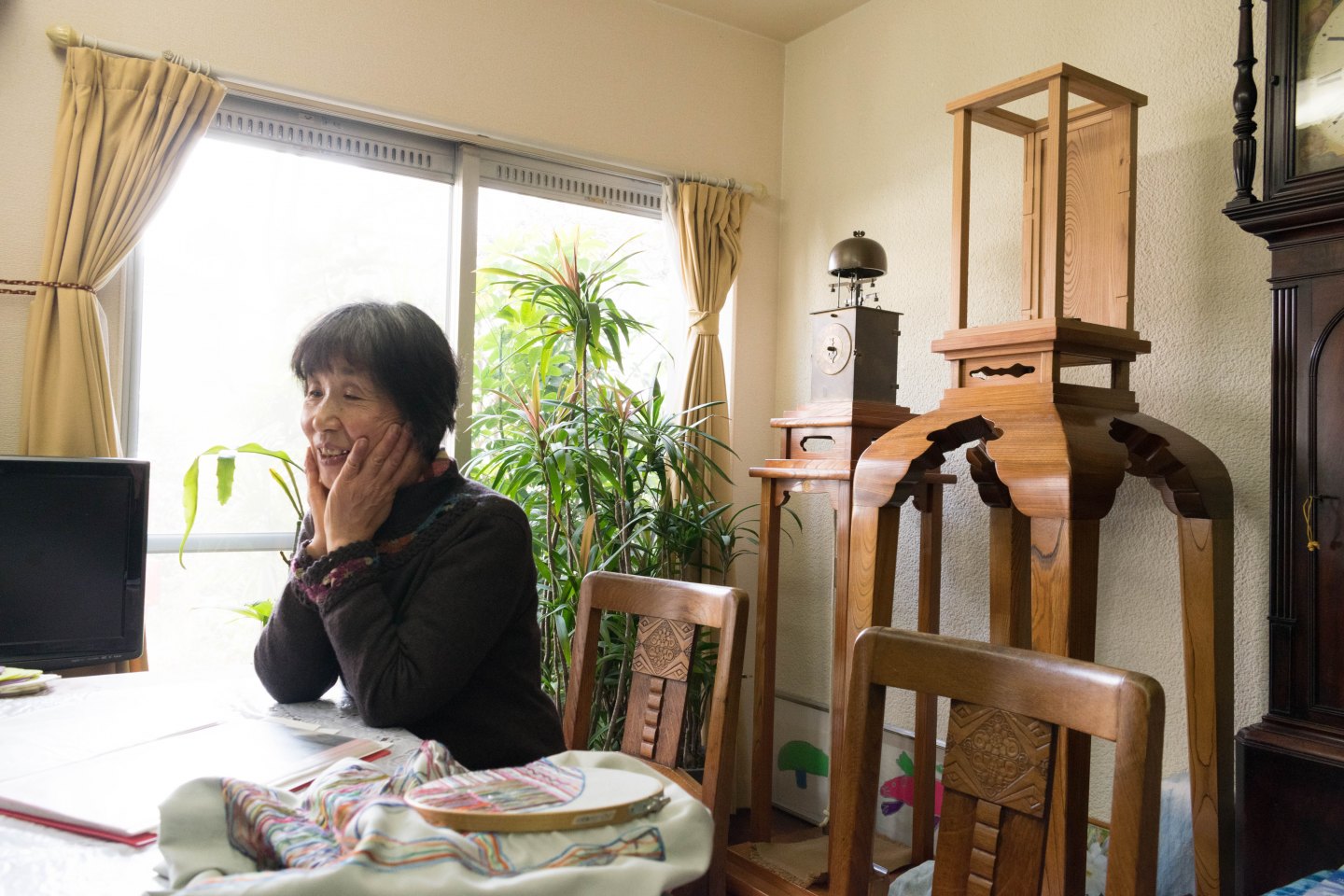
Hikaru Matsubara creates his own styled embroidery pieces in a vibrant and dynamic way. Set in his living room, where an old Edo Period Japanese clock crafted by his father and other wall clocks are surrounded, we ask his mother, Shoko Matsubara, about Hikaru.
(Looking at his recent work)
──He mentioned that this picture of a steam train was his first work, didn’t he?
Correct, I remember that I pointed out about the fumes being purple, he then re-colored it in a dark grey. But then it ended up looking too plain, so he recoloured it in purple and brought back the vividness. This was the moment when I recognized his particular sense of color, which took me by surprise. Though I actually have experience in studying oil painting at the Kyoto University of Education, he is much better than me. His way of colouring and his energetically dimensional composition really amazes me. It looks beautiful from up close and gives one such a great impression. I didn’t think one could draw in such a way.
──Did he make his debut creation when he was 16?
Right, right, that was when he was a 2nd year high school student.
Until then, he only drew at school. He was secretly working in the hopes of getting a job. Despite his effort, the economy took a turn for the worse and the opportunity slipped him by. It was then that we realized we had to do something else, at which point I casually suggested that he pick up embroidery. He’d always been good with his hands and as a result he was naturally good at using a sewing machine. I sort of showed him how to do it and encouraged him to initiate, then I left him to carry on doing it by himself. After just three days he’d created a gorgeous piece, something I was completely not expecting. Initially it was meant to be a wall pocket but I thought it would be a waste.
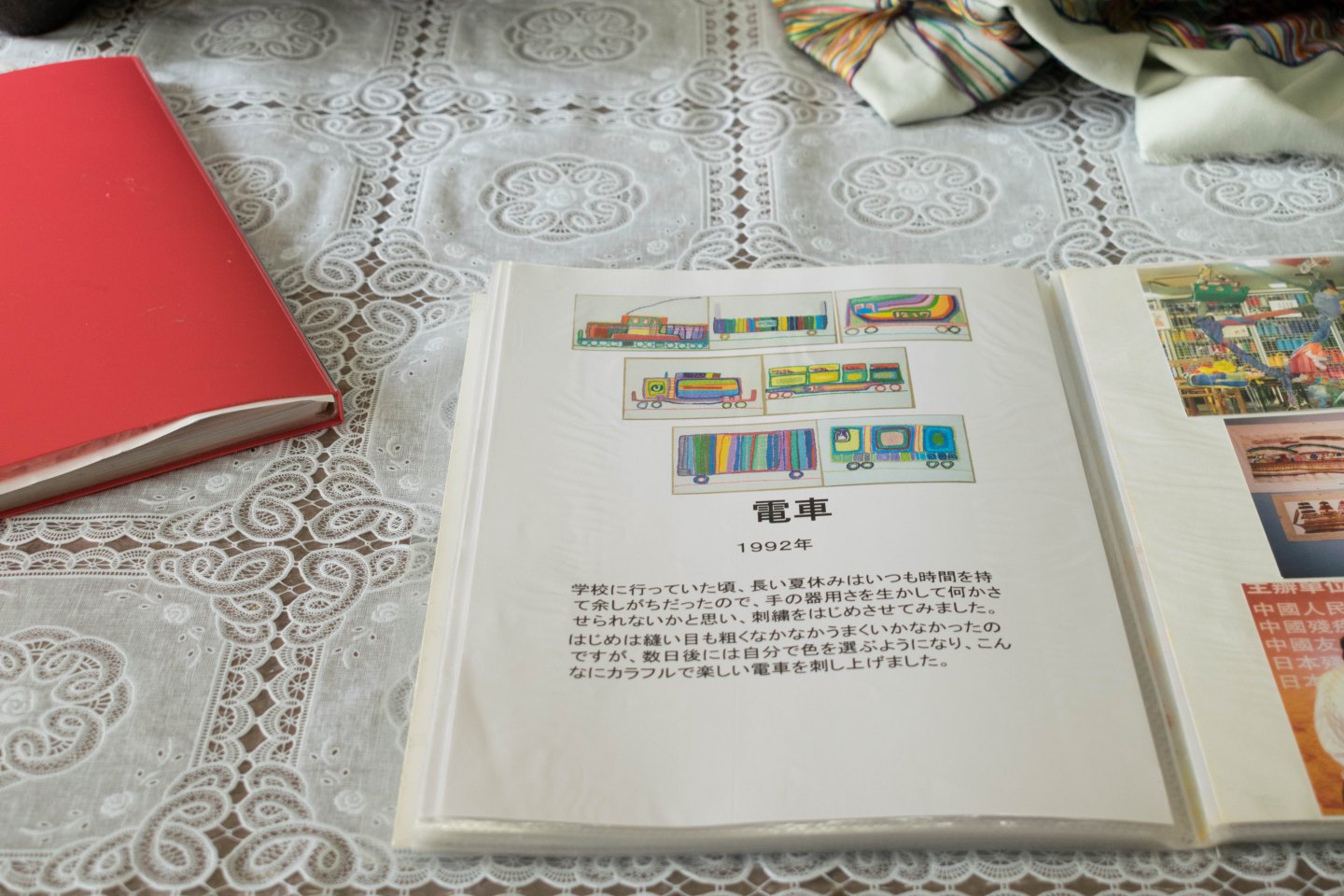
──So in the beginning, he didn’t intend to become a professional?
No, and even now he still has that attitude. He prefers to makes things to kill some time or when he’s feeling like it
Recently his seamwork has been getting rough. It used to be finer but now he’s eager to finish up as fast as he can, as a result the stitching is becoming rough, or even wild if you like. In the beginning it was literary ‘embroidery’ as it was so detailed, but his latest works are more like a ‘picture’, playing with threads, I would say it is like Hikaru’s own world. I didn’t teach him anything, he somehow just plays around with techniques but if I try to introduce him to a certain way then he will never listen to me.
──His works are compiled in this file, I also like the included commentary by him. Were those written soon after completing those works?
No, it was quite a while ago, we took a photo of the works and compiled them.
This one is from when we went to Okinawa. When he was drawing the Shisa (Okinawan guardian lions) after his trip to Okinawa, the color really represented Okinawa itself, he must have kept such feelings from the times when he travelled. It was an interesting time, he often said that he wanted to get onto a boat, or that he wanted to get onto a flight, and those were his motives for embroidery. Nowadays, he has less of such motivation.
Oh this one…this is very dark. Some people like it but he decided to rest for a year and a half. I also said to him, step back for a while as your works are becoming so dark.
After a while, when he felt that he was ready, he came back to his work and you can tell from his colors that he felt refreshed, particularly through the tanker and the excavator. It feels like I’m reading his diary, you see his change over time depending on what was happening to and around him.
──He changes his method of colouring against the color of the fabric.
That’s right; I’m thrilled to see what might be coming each time.
When it comes to embroidery, you can’t create colors given that you are using threads and you can’t mix the colours together freely as you might do with painting. You make a gradation of colors out of 200-400 threads for embroidery. It’s such an impressive skill that he employs.
His style has evolved over time; you can see change, I find it very interesting. One time I wished he had stayed with his previous style because it was easier to understand. However contrary to my wish his work has become the way it is now….and it’s nothing like it was before.

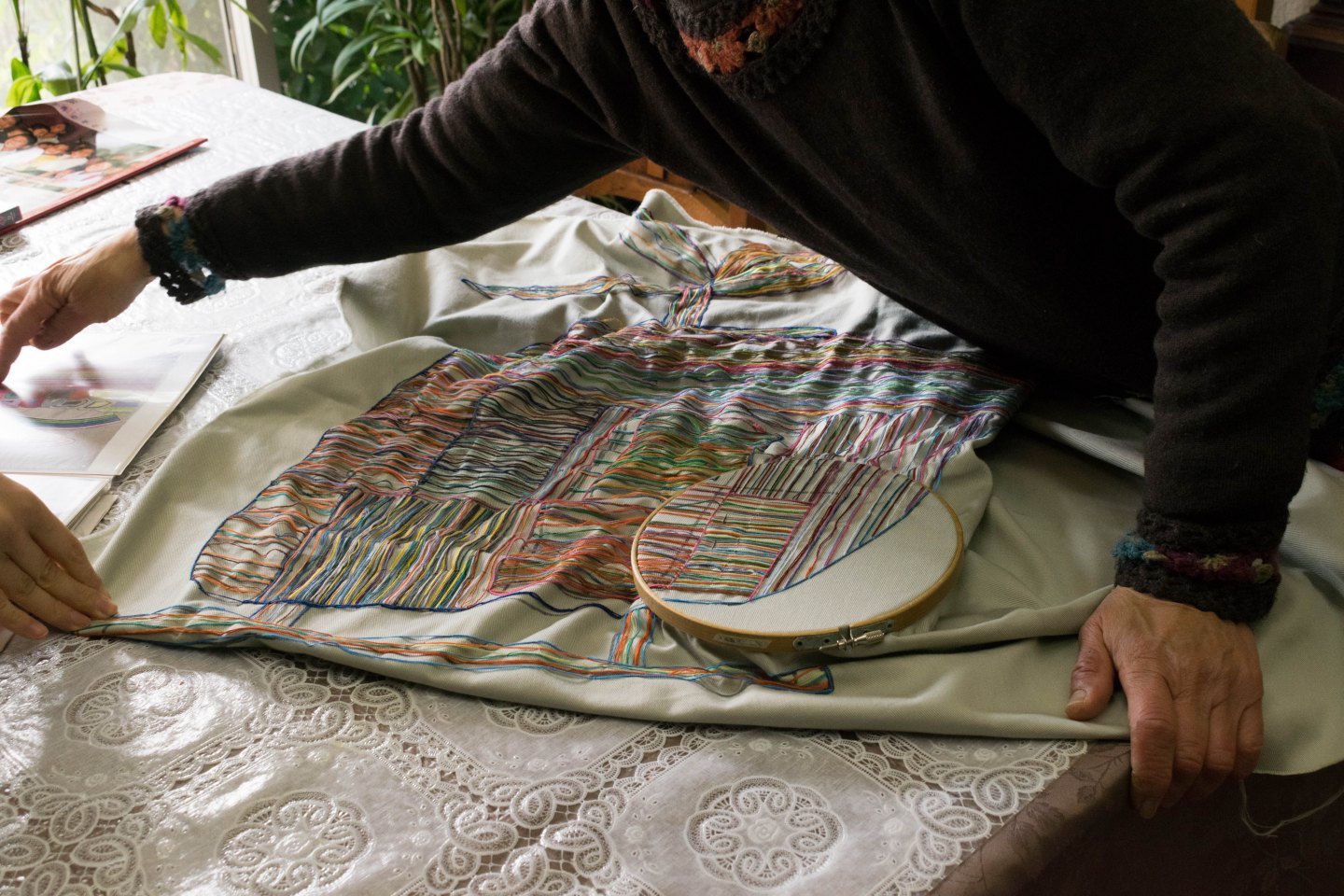
(Looking through his past photo album)
──He’s not changed at all.
This is his teacher, Mr. Shimamoto’s (*1) message. He is always raving about Hikaru, he’s such an interesting person.
──I heard that Mr Shinamoto also highly evaluated Hanako Imamura (*2) for her talent.
Yes, yes, she went to the same school. Mr. Shimamoto was the Principal of the Kyoto University of Education special support school. After Hikaru graduated, Mr. Shimamoto came along to Hikaru’s solo exhibition following his having enough works to have such an exhibition. Mr. Shimamoto liked his works and encouraged him to join the AU(*3)
──How did the exhibition happen?
That was the time when Hikaru went to an ENT and we showed his work to the doctor. We shared it with the doctor with no other real intentions, but the doctor actually went to speak with those who were knowledgeable in art, which turned out to be the Megumi Home. Hikaru was contacted by them asking to exhibit his collection, they were incredibly nice about everything
──On average, how long does Hikaru take to finish one of his works?
He takes a month if it is small, if it’s something bigger then it can take up to a year. Given that he has devoted himself to his craft for decades, his work has also piled up to a large degree. My friend who also draws pictures is very impressed by his passion.
For us, living together as the three of us, his embroidery has become a part of our everyday life. For example, he might start embroidering after taking a bath.
──Does he start embroidering after he comes back from work?
Yes, he does. Around this time he’s not been feeling well and has been quite exhausted, as a result he tends to come home early so he’s had some extra time. I personally think that is better for him.
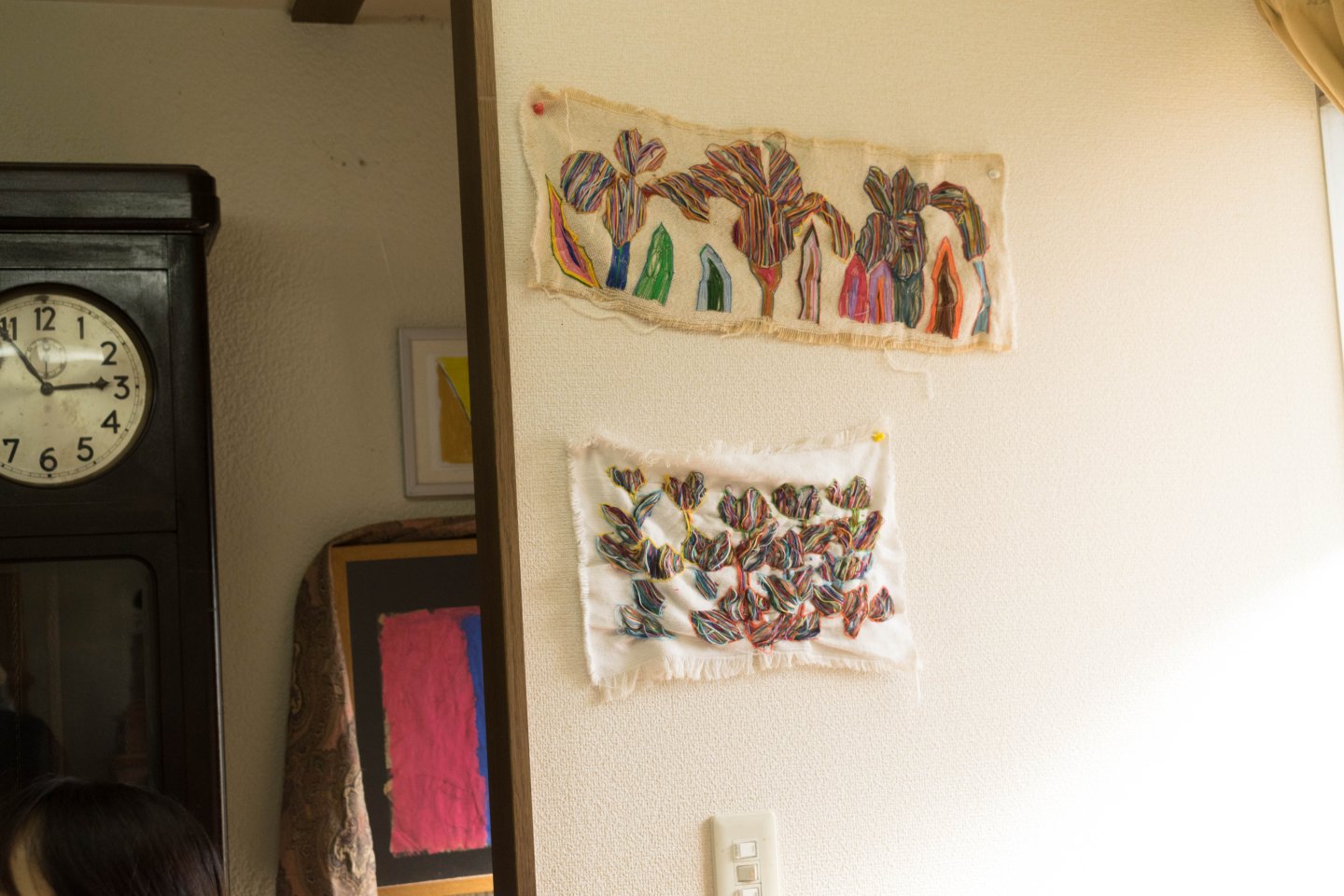
──I like the sound of the clock, it is soft.(in the living room, there is a big Japanese clock made by Hikaru’s father, along with other wall clocks)
I agree. It makes me feel at home, it’s rather relaxing. This sound was also included in the message for his solo exhibition run by Megumi home.
──So the clocks have been on these walls since then?
Yes, although there used to be more. Oh here it is, this is the message. I like this one.。
It was when he was at elementary school, I made this bag and he decorated it, and it ended up becoming one of his works.
──I saw an apron with some nice embroidery on it, it was very sweet.
That’s right, but he doesn’t usually feel like making such things.
In another manner of speaking, it’s more like he doesn’t want to compromise. When he is asked to apply his embroidery on a bag, he never does it. Because of how unpredictable he is, he always surprises us. It makes me wonder if that very stubbornness might be a source of his creation, his drive.
──Does he change the motif each time? For example scenery, transportation, plants…
Yes, that’s right I ask him to do this or that kind of theme, and he’ll do it for me.
Also, animals. He likes zoos, he really does what he sees.
This is a flower blooming nearby our home. Because I asked him to work on it when the Japanese morning glory was flourishing in the ample sunshine, the motif ended up like this. Surreal, isn’t it? There aren’t really many others who work like he does. This is how he interpreted the sunshine. After all pictures are just like words, when someone draws a giraffe, everyone can tell what that is the same way when you write “giraffe,” people know what you mean, that is our mutual understanding. Hikaru on the other hand doesn’t have such an understanding; instead he has his own ways of drawing. I bet he doesn’t have a professional prospective in a sort of way
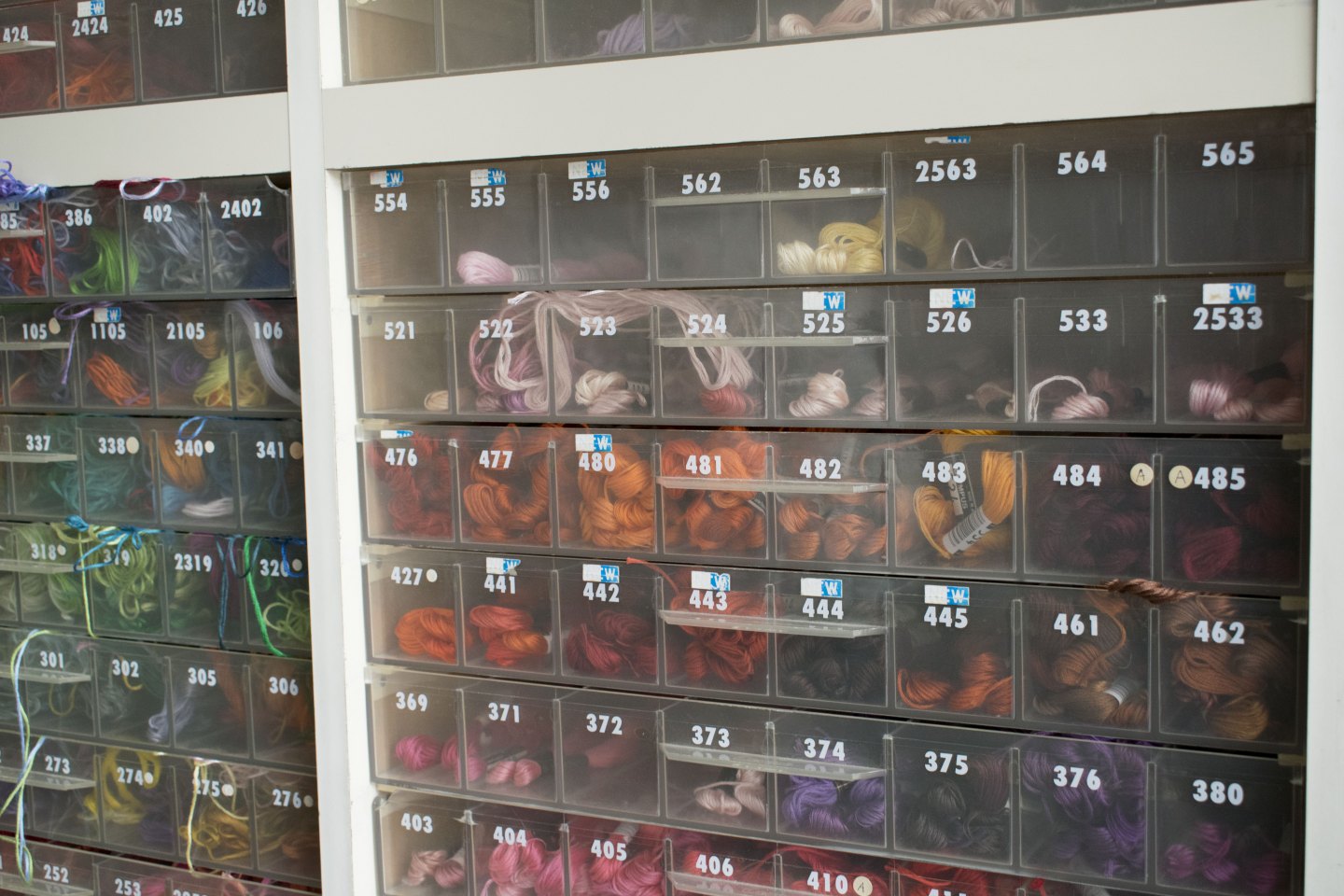
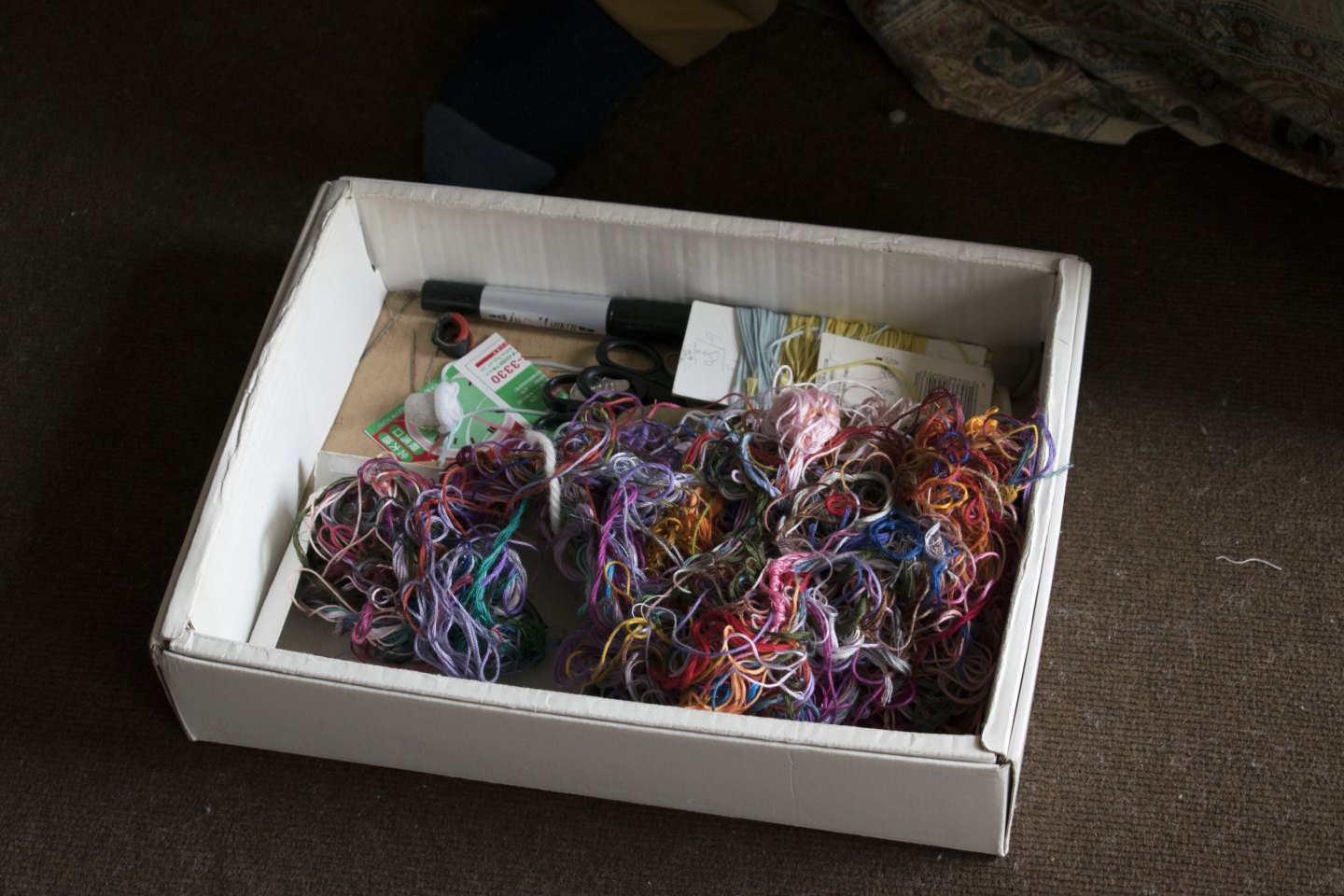
──We also filmed his diary. Since when did he stark working on it?
Since he was little, I think around when he was at elementary school. I can’t recall exactly when it was he began to keep it. I hoped that it would help to broaden his vocabulary and the like. I thought it would be easier if he wrote about things in his everyday life to start making such connections. He wrote the same things mostly, I guess nothing changes besides on the weekends? At weekends, he’d go out somewhere so he could write something different.
──The pictures in his diary haven’t changed at all, have they?
No, they really haven’t. Actually they haven’t changed at all since he was in elementary school. Rather than drawing he would write, it was written as something to convey a meaning, so there was no real attempt to draw well.
──His writing has certainly changed. His more recent writings are much easier to read
That’s right. I asked him to write more intelligibly, and he took that in and changed his writing.
──He often goes travelling, doesn’t he?
He loves travelling and he usually goes three to four times in a year. Travelling is his drive for work. He loves trains, he’s such a transport geek!
──Does that mean he wants to get away from things?
No, he simply wants to be on a train. He often looks at maps, and buying a train timetable is something he looks forward to every year. He rides on the Shinkansen to Tokyo and changes to the Chosi Electric Railway to Chiba. I’mnot sure if it’s called the ‘Shiosai’, he’s the one who knows a lot more about these kinds of things! So he jumps on the Shiosai line from Tokyo and changes to the Chosi Electric railway to Inubosaki.
His handwriting itself is fine, but what he does is he writes using complex words that are hard to understand.
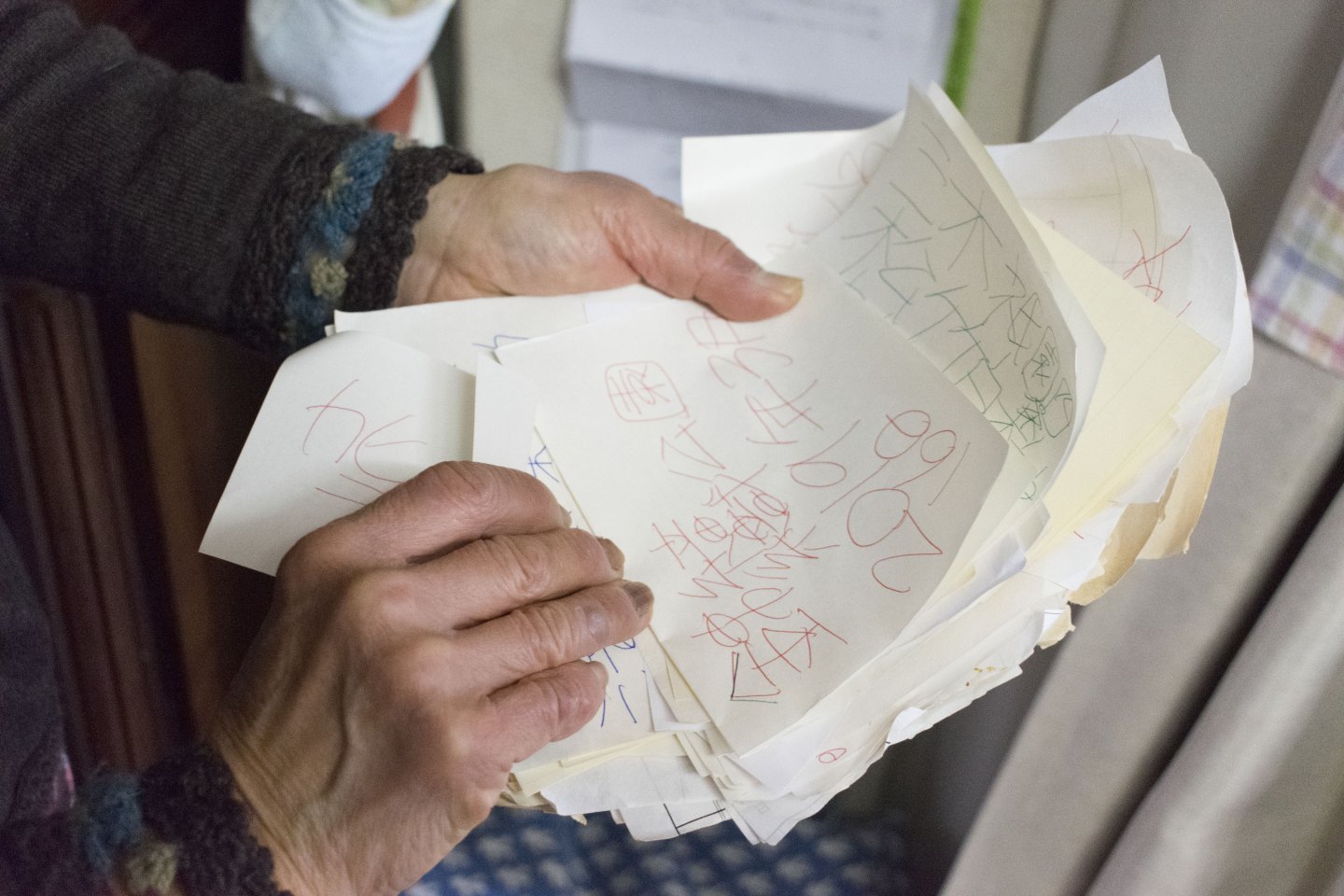
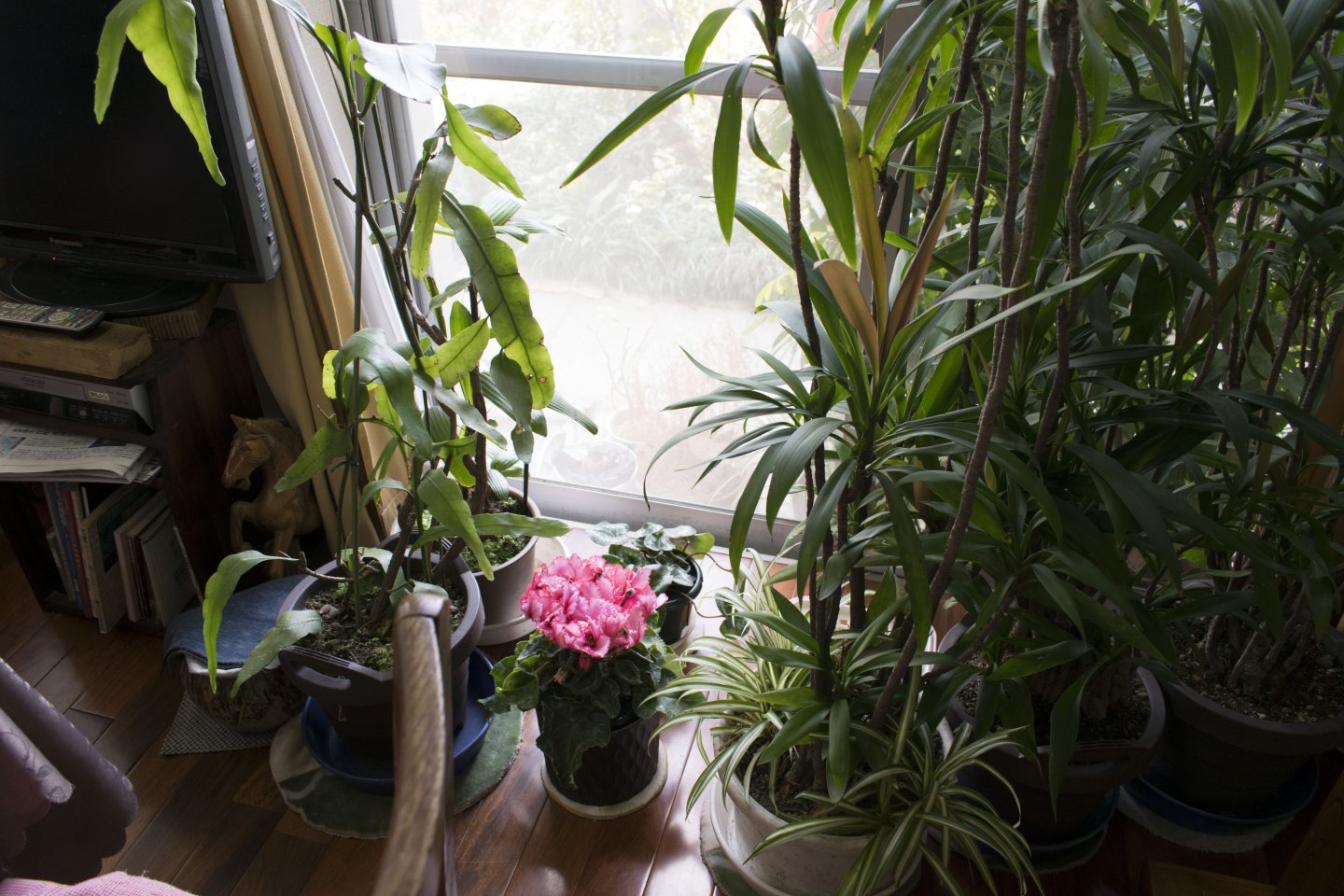
──Do you communicate through notes?
Yes, we do. Here we have some.(pointing at the pockets hanging from the wall by the living room. There are notes written, with some single words) It takes time if he writes each sentence, so we have it like this note, just words written like ‘go’, go + (where),…etc. we don’t throw them away as we reuse them, writing from scratch takes time so it’s much faster this way. We search for old notes, reuse them and this is how we communicate. The problem with this however is that the words used, the vocabulary doesn’t increase. He only uses the terms related to things he’s interested in.
──Does he enjoy writing words?
Yes, he does. He was not able to communicate well in the past, but once he reached around age 20 he began to get better, and now he does not stop talking!
On this occasion, because the art space co-jin staffs are coming to see us, we ironed his work and glued them onto black art boards, this got him excited. If you leave him be he starts to lose interest. He needs to be poked at to promote communicating with other people, or even to get him to keep drawing. I think after all, having expectations of him and holding exhibitions are a necessity. Even though that doesn’t necessarily seem to bring him much joy!….Trial and error seems to be the way I’m spending my time dealing with these issues. I’ve gotten quite a bit older myself, so I have to start thinking more about his works. Having said that, I have been sitting around doing nothing so far. Selling his work does not sound right to me as I know how hard that sort of life would be. All I wish for is him to enjoy each and every day. I hope that embroidery broadens his horizon, and I’m appreciative for the connection.
──Do you think he enjoys receiving attention?
Yes, he does. It actually means a lot to him as he has a limit on expressing himself with words.
He wasn’t able to express himself verbally, but now he’s become able to. It is fascinating. He has good and bad days. I feel like he’s climbing up a mountain, when he is in the process of walking up to the summit he feels he won’t ever do it again, but once he reaches the top and can see the great view, he forgets all the hardships from along the way. Because he has those ups and downs, it’s those very experiences that have made him productive. For those who are raising children, they tend to go easy on them with a lot of different things, but I want to say it out loud that you will benefit from giving them a bit of a hard time occasionally.
*1 Shozo Shimamoto(1928~2013)was a main member of the Avant-Garde Art group, GUTAI art association, and an internationally active artist. He was also appointed as Principal of the special needs school of the Kyoto University of Education for 2 years from 1989.
*2 Hanako Imamura, born in 1979 and a Kyoto resident
*3 In 1975 the ‘Artist Union’ was formed mainly by writers who were active in 60’s, in the 1980s it was changed to ‘Art Unidentified’, AU. Shozo Shimamoto supported their activities as a Chief Director from 1976. Initial members have gradually left and now many young artists have begun to participate.
聞き手:今村遼佑、舩戸彩子(きょうと障害者文化芸術推進機構)